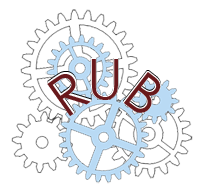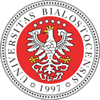Proszę używać tego identyfikatora do cytowań lub wstaw link do tej pozycji:
http://hdl.handle.net/11320/7211Pełny rekord metadanych
| Pole DC | Wartość | Język |
|---|---|---|
| dc.contributor.author | Zegarowicz, Łukasz | - |
| dc.date.accessioned | 2018-12-03T14:05:41Z | - |
| dc.date.available | 2018-12-03T14:05:41Z | - |
| dc.date.issued | 2018 | - |
| dc.identifier.citation | Optimum. Economic Studies, Nr 2(92) 2018, s. 154-167 | pl |
| dc.identifier.issn | 1506-7637 | - |
| dc.identifier.uri | http://hdl.handle.net/11320/7211 | - |
| dc.description.abstract | The purpose of the paper is to present the Patent Box, a tax instrument for creating innovative potential which is becoming increasingly popular in EU economies, and to analyze what impact a Patent Box can have on the level of innovation of a country’s economy. To achieve this objective, two research methods are used: critical analysis of the literature and quantitative research. The literature studies involved presenting the operation mechanism of Patent Boxes and justifying (based on the theory of economics) the usage of such instruments in creating the innovation potential of an economy. The quantitative research consisted in analyzing the relationship between Patent Box instruments possessed by individual EU countries within their tax systems in the years 2011–2015 and the level of innovation in these countries expressed as outcome indicators based on the number of patents. The conducted analysis allowed the author to validate the hypothesis that the Patent Box has an effect on the level of innovation in EU countries. In Polish scientific literature there are relatively few publications addressing the issue of the operating mechanisms of the Patent Box or the economic effects resulting from the application of this kind of innovative tax policy tool. Considering the importance of innovation in making economic growth processes more dynamic, there is a need to undertake further research in this scope. The conducted research facilitates exploration of both the theoretical and empirical knowledge of the issue. Its conclusions might also prove useful in the scientific debate concerning the support provided by the state to the private sector in Poland in their efforts to embark on innovative activities. | pl |
| dc.language.iso | en | pl |
| dc.publisher | Wydawnictwo Uniwersytetu w Białymstoku | pl |
| dc.subject | Patent Box | pl |
| dc.subject | innovation policy | pl |
| dc.subject | tax incentive | pl |
| dc.subject | patent | pl |
| dc.title | The patent box as an instrument for creating innovation in EU countries | pl |
| dc.type | Article | pl |
| dc.identifier.doi | 10.15290/oes.2018.02.92.12 | - |
| dc.description.Email | l.zegarowicz@uwb.edu.pl | pl |
| dc.description.Affiliation | Faculty of Economics and Management, University of Bialystok | pl |
| dc.description.references | A Study on R&D Tax Incentives. Final Report, 2014, Working Paper no. 52, Taxation Papers, Taxation and Customs Union, European Commission. | pl |
| dc.description.references | Abramowitz M., 1956, Resource and Output Trends in the United States since 1870, Occasional Paper 52, National Bureau of Economic Research, Inc. | pl |
| dc.description.references | Aghion P., Howitt P., 1992, A Model of Growth through Creative Destruction, Econometrica, Vol. 60, Issue 2 (March). | pl |
| dc.description.references | Alstadsæter A., Barrios S., Nicodeme G., Skonieczna A. M., Vezzani A., 2015, Patent Boxes Design, Patents Location and Local R&D, IPTS Working Papers on Corporate R&D and Innovation – No. 6/2015, JRC Technical Reports, Joint Research Centre, European Commission. | pl |
| dc.description.references | Arrow K. J., 1962, The Economic Implications of Learning by Doing, Review of Economic Studies, Vol. 29, No. 3 (June). | pl |
| dc.description.references | Bradley S., Dauchy E., Robinson L., 2015, Cross-Country Evidence on the Preliminary Effects of Patent Box Regimes on Patent Activity and Ownership, National Tax Journal, Vol. 68, Issue 4, pp. 1047–1072. | pl |
| dc.description.references | Corporate tax rates table, KPMG, electronic document, access mode: [https://home.kpmg.com/xx/en/home/services/tax/tax-tools-and-resources/taxrates-online/corporate-tax-rates-table.html, date of entry: 09.04.2016]. | pl |
| dc.description.references | Cyprus a tax efficient EU Intellectual Property location, 2012, PwC. | pl |
| dc.description.references | Design and Evaluating of Tax Incentives for Business Research and Development. Good practice and future developments. Final Report, 2009, Expert Group on Impacts of R&D Tax Incentives, Directorate General – Research, European Commission, Brussels. | pl |
| dc.description.references | Global Research & Development Incentives Group. February 2016, 2016, PwC. | pl |
| dc.description.references | Global Survey of R&D Tax Incentives, 2011, Deloitte. | pl |
| dc.description.references | Grossman G. M., Helpman E., 1991, Quality Ladders in the Theory of Growth, Review of Economic Studies, Vol. 58, No. 1 (January). | pl |
| dc.description.references | Koimtzoglu I., Lytras N., 2015, Greece, [in:] Cahiers de droit fiscal international. Volume 100A: Tax incentives on Research and Development (R&D), 2015 Basel Congress, International Fiscal Association (IFA). | pl |
| dc.description.references | Merril P., 2016, Innovation Boxes: BEPS and Beyond, National Tax Journal, Vol. 69, Issue 4. | pl |
| dc.description.references | Potencjał innowacyjny gospodarki: uwarunkowania, determinanty, perspektywy, 2016, Narodowy Bank Polski, NBP, Warszawa. | pl |
| dc.description.references | Romer P. M., 1986, Increasing Returns of Long-Run Growth, Journal of Political Economy, Vol. 94, No. 5 (October). | pl |
| dc.description.references | Schumpeter J., 1960, Teoria rozwoju gospodarczego, Państwowe Wydawnictwo Naukowe, Warszawa. | pl |
| dc.description.references | Solow R. M., 1957, Technical Change and the Aggregate Production Function, The Review of Economics and Statistics, Vol. 37, No. 3 (August). | pl |
| dc.description.references | Wildowicz-Giegiel A., Dziemianowicz R., 2015, The impact of tax incentives on the process of innovation creation in Polish economy, Proc. of the Third Intl. Conf. Advances in Social Science, Economics and Management Study, Institute of Research Engineers and Doctors, USA. | pl |
| dc.description.references | WIPO IP Statistics Data Center, WIPO, electronic document, access mode: [https://www3.wipo.int/ipstats/index.htm, date of entry: 12.04.2016]. | pl |
| dc.description.references | Worldwide R&D incentives reference guide 2014–15, 2014, EY. | pl |
| dc.description.references | Worldwide R&D incentives reference guide 2013–2014, 2013, EY. | pl |
| dc.description.references | 2012 Global Survey of R&D Tax Incentives, 2012, Deloitte. | pl |
| dc.description.references | 2013 Global Survey of R&D Tax Incentives, 2013, Deloitte. | pl |
| dc.description.references | 2014 Global Survey of R&D Tax Incentives, 2014, Deloitte. | pl |
| dc.description.references | 2015 Global Survey of R&D Incentives, 2015, Deloitte. | pl |
| dc.description.number | 2(92) | - |
| dc.description.firstpage | 154 | pl |
| dc.description.lastpage | 167 | pl |
| dc.identifier.citation2 | Optimum. Economic Studies | pl |
| Występuje w kolekcji(ach): | Artykuły naukowe (WEiF) Optimum. Economic Studies, 2018, nr 2(92) | |
Pliki w tej pozycji:
| Plik | Opis | Rozmiar | Format | |
|---|---|---|---|---|
| Optimum_2_2018_L_Zegarowicz_The_patent_box_as_an_instrument_for_creating_innovation_in_EU_countries.pdf | 422,52 kB | Adobe PDF | Otwórz |
Pozycja jest chroniona prawem autorskim (Copyright © Wszelkie prawa zastrzeżone)

